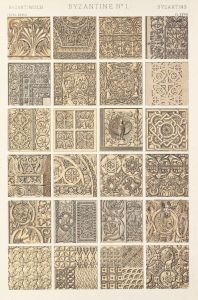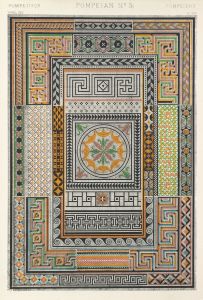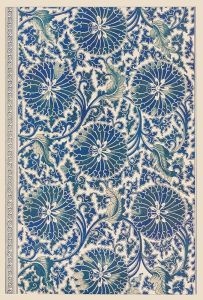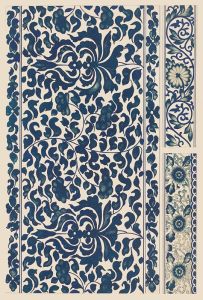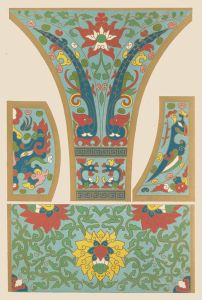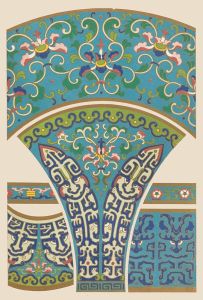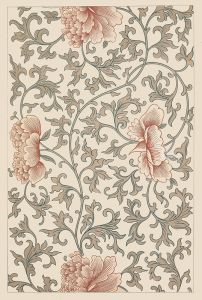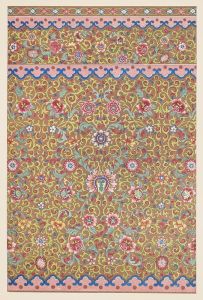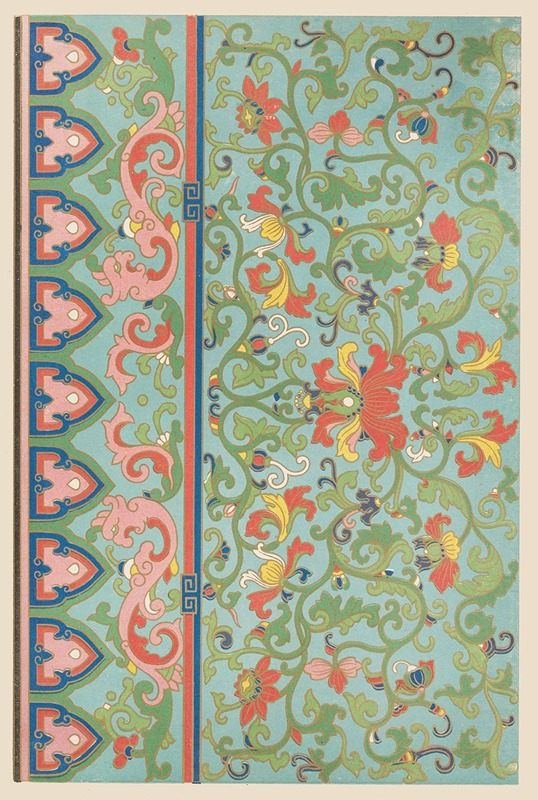
Examples of Chinese ornament, Pl.08
A hand-painted replica of Owen Jones’s masterpiece Examples of Chinese ornament, Pl.08, meticulously crafted by professional artists to capture the true essence of the original. Each piece is created with museum-quality canvas and rare mineral pigments, carefully painted by experienced artists with delicate brushstrokes and rich, layered colors to perfectly recreate the texture of the original artwork. Unlike machine-printed reproductions, this hand-painted version brings the painting to life, infused with the artist’s emotions and skill in every stroke. Whether for personal collection or home decoration, it instantly elevates the artistic atmosphere of any space.
"Examples of Chinese Ornament, Pl.08" is a design plate created by Owen Jones, a prominent British architect and designer of the 19th century. This plate is part of his influential work The Grammar of Ornament, first published in 1856. The book is a comprehensive study of decorative arts and design principles from various cultures around the world, aiming to provide inspiration and guidance for designers and architects of the Victorian era.
Owen Jones was deeply interested in the decorative traditions of different civilizations, and his work reflects a systematic approach to studying and categorizing ornamental styles. Plate 08, specifically, focuses on Chinese ornamentation. It showcases a selection of patterns and motifs that Jones identified as characteristic of Chinese decorative art. These designs are rendered in vibrant colors and intricate geometric and floral arrangements, reflecting the aesthetic principles of symmetry, balance, and harmony that are often associated with traditional Chinese art.
Jones sourced his examples of Chinese ornamentation from artifacts, textiles, ceramics, and architectural elements that were available to him through museum collections and exhibitions in Europe. His work was part of a broader 19th-century fascination with non-Western art and design, which was fueled by increased global trade and cultural exchange during the colonial period. However, it is important to note that Jones's interpretations of Chinese ornament were filtered through a Western perspective, and his representations may not fully capture the cultural and symbolic meanings of the original designs.
The Grammar of Ornament was groundbreaking in its time for promoting the study of design across cultures and for advocating the use of historical ornament as a source of inspiration for contemporary design. The book remains a significant reference for art historians, designers, and scholars interested in the history of decorative arts. Plate 08, as part of this larger work, contributes to the understanding and appreciation of Chinese decorative traditions within a global context.
Jones's work, including this plate, is now in the public domain and continues to be studied and reproduced in various formats. It serves as a historical document that reflects 19th-century attitudes toward design and cross-cultural exchange, as well as a visual resource for exploring the rich heritage of Chinese ornamentation.








